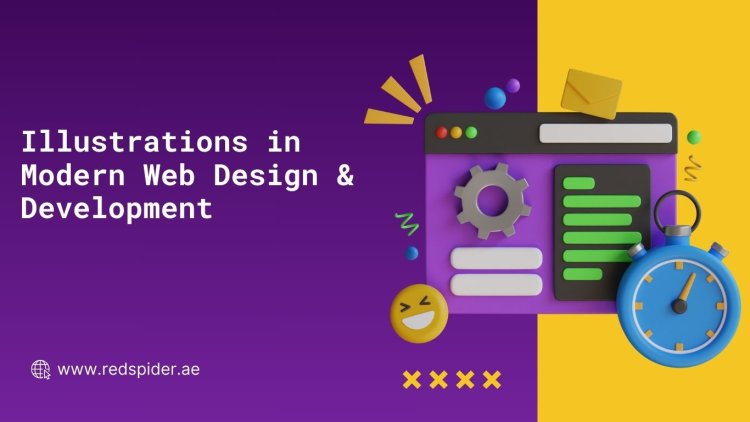The Role of Illustrations in Modern Web Design & Development
Discover how illustrations enhance modern web design, improve user experience, and strengthen brand identity.
Share this Post to earn Money ( Upto ₹100 per 1000 Views )

In the world of web design and development, illustrations have become a pivotal element in creating engaging and visually appealing websites. They serve not only as decorative elements but also as powerful tools to communicate ideas, improve user experience, and build brand identity.
This article explores the significance of illustrations in modern web design and development, highlighting their benefits and how they can be effectively utilized.
Why Illustrations Matter
Illustrations offer a unique way to convey information and emotions that text and photos alone may struggle to achieve. Here are a few reasons why illustrations are crucial in modern web design:
Improving Visual Appeal
Illustrations can transform a plain website into a visually captivating experience. They add personality and charm that help differentiate a website from competitors. Custom illustrations, in particular, can give a site a unique look that stands out in a crowded digital space.
Improving User Experience
Good illustrations can guide users through a website, making navigation intuitive and enjoyable. They can highlight important features, explain complex ideas, and make content more engaging. For example, an illustration can break up long blocks of text and make information easier to digest.
Brand Identity
Illustrations play a crucial role in establishing and maintaining a brand's identity. They can reflect a brand's values, culture, and style, creating a cohesive look across all digital platforms. Custom illustrations can help build a strong visual brand that resonates with users and makes a lasting impression.
Simplifying Complex Information
Complex concepts and data can be challenging to present clearly. Illustrations can simplify these concepts by turning them into visual stories or infographics. This approach helps users understand and retain information more effectively.
Types of Illustrations in Web Design
There are various types of illustrations used in web design, each serving a different purpose:
-
Custom Illustrations: Tailored specifically for a website, custom illustrations align closely with the brand's identity and message. They can be used for logos, icons, and unique graphic elements that help set a site apart.
-
Infographics: Infographics combine text, numbers, and illustrations to present data and information in a visually appealing way. They are particularly useful for explaining complex statistics and trends.
-
Icons: Icons are simplified illustrations used to represent actions, objects, or concepts. They enhance navigation and functionality by providing visual cues that are easy to recognize.
-
Character Illustrations: These illustrations feature people or mascots that add a personal touch to a website. They can make a brand more relatable and engaging by giving it a friendly face.
-
Background Illustrations: Background illustrations add depth and texture to a website's design. They can set the mood and tone of the site, making it more immersive.
Best Practices for Using Illustrations
To maximize the effectiveness of illustrations in web design, consider the following best practices:
-
Align with Brand Identity: Ensure that illustrations reflect your brand's style and values. Consistency in visual elements helps reinforce brand recognition and trust.
-
Maintain Quality and Consistency: High-quality illustrations are crucial for a professional look. Consistent use of style and colors across the website helps create a cohesive visual experience.
-
Optimize for Performance: While illustrations enhance visual appeal, they should not compromise website performance. Use optimized file formats and sizes to ensure fast loading times.
-
Ensure Accessibility: Illustrations should be used in a way that supports accessibility. Provide alternative text descriptions for important images and ensure that illustrations do not hinder the website's usability.
-
Focus on User Experience: Illustrations should enhance, not distract from, the user experience. They should support content and navigation, making the website more engaging and user-friendly.
Illustrations in Action
To see how illustrations can be effectively integrated into web design, consider exploring the work of a leading web development company. Their portfolio showcases how custom illustrations can elevate the user experience and contribute to a brand's visual identity.
Conclusion
Incorporating illustrations into modern web design and development is more than just a trend—it's a strategic approach to enhancing user engagement and brand identity. Whether you're using custom illustrations, infographics, or background designs, they can significantly impact the overall user experience.
By adhering to best practices and aligning illustrations with your brand's identity, you can create a visually appealing and effective website.
For those looking to see how illustrations can be leveraged in web design, consider exploring the work of RedSpider Web & Art Design. Their innovative use of illustrations demonstrates the powerful role visuals play in crafting exceptional web experiences.







